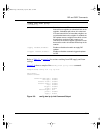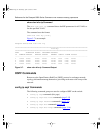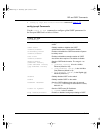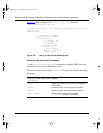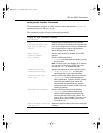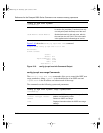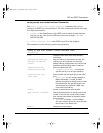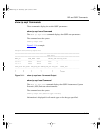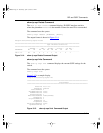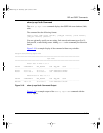
RIP and OSPF Commands
208967-B 3-17
config ip ospf area virtual-interface Commands
The
config ip ospf area virtual-interface commands allow you to
configure an OSPF area virtual interface. All of the commands have the following
two required parameters:
•
<ipaddr> is the identification of an OSPF area in dotted-decimal notation.
You can use any value for the OSPF area name (for example, 1.1.1.1 or
200.200.200.200).
•
virtual-interface <nbr> is the OSPF router ID of the neighbor.
The commands use the following syntax and parameters
:
config ip ospf area <ipaddr> virtual-interface <nbr>
followed by:
info Displays current OSPF area virtual interface
information.
add-message-digest-key
<md5-key-id> md5-key
<value>
Adds an md5 key to the interface. At most, two
md5 keys can be configured to an interface.
Multiple md5 key configurations are used for md5
transitions without bringing down an interface.
authentication-key
<authentication-key>
Sets the authentication key.
• <authentication-key> is a string that
specifies the key in up to eight characters.
authentication-type
<auth-type>
Sets the OSPF authentication type for the OSPF
area.
• <auth-type> is none, simple password, or
MD5 authentication. If simple, all OSPF
updates received by the interface must contain
the authentication key specified by the
area
authentication-key
command. If MD5, they
must contain the md5 key.
create Creates a virtual interface area identifier.
dead-interval <seconds> Sets the dead interval for the virtual interface, the
number of seconds that a router’s hello packets
have not been seen before its neighbors declare
the router down.
• <seconds> is between 1 and 214783647.
This value must be at least four times the hello
interval value. The default is 60.
delete Deletes the virtual interface.
cli.book Page17 Wednesday, April 19,2000 3:14 PM



